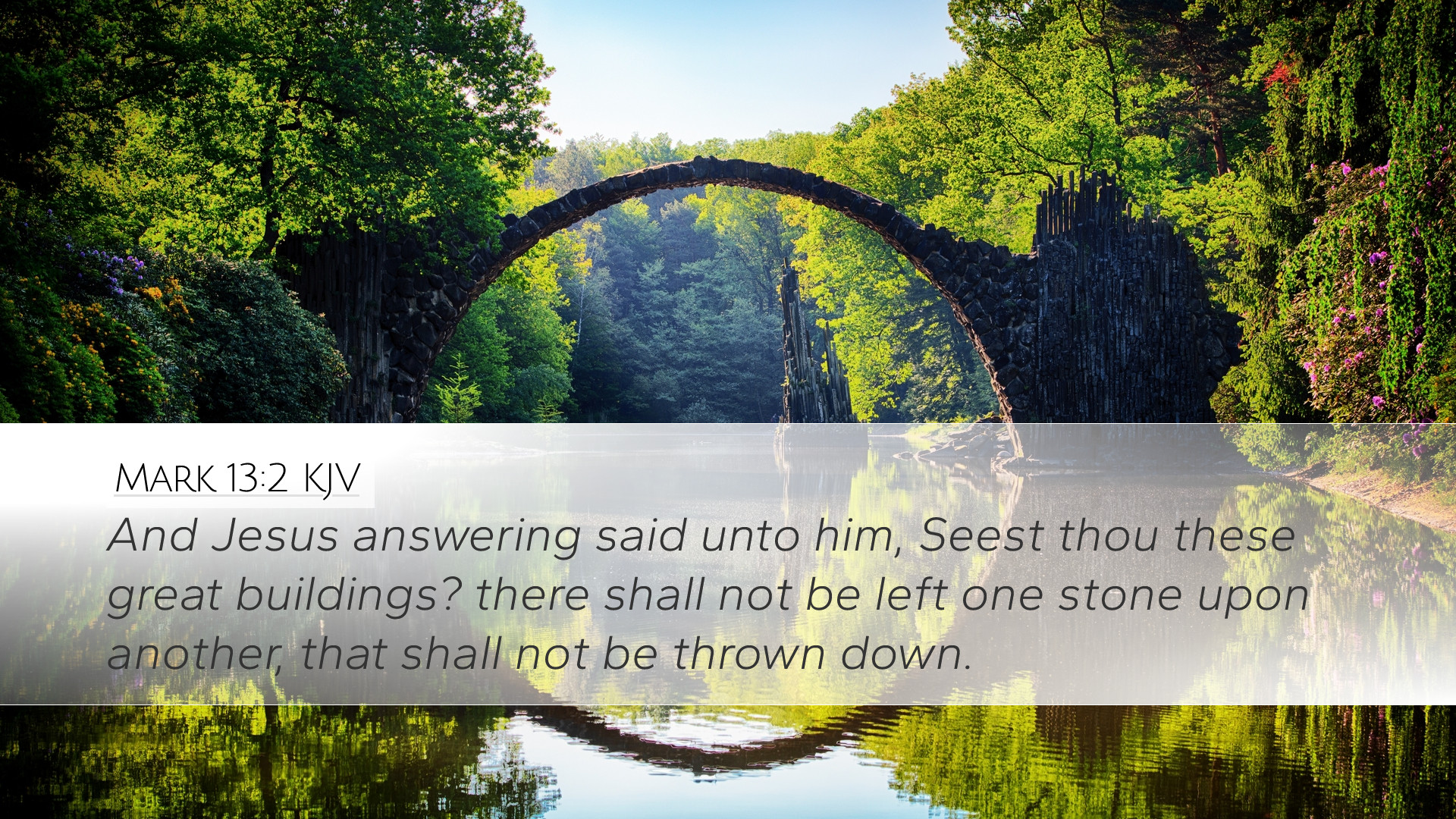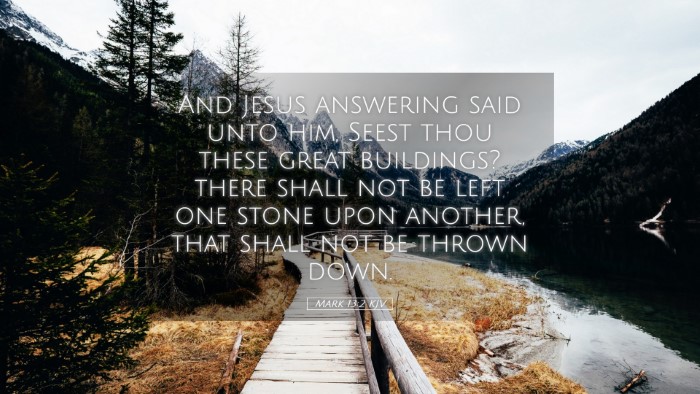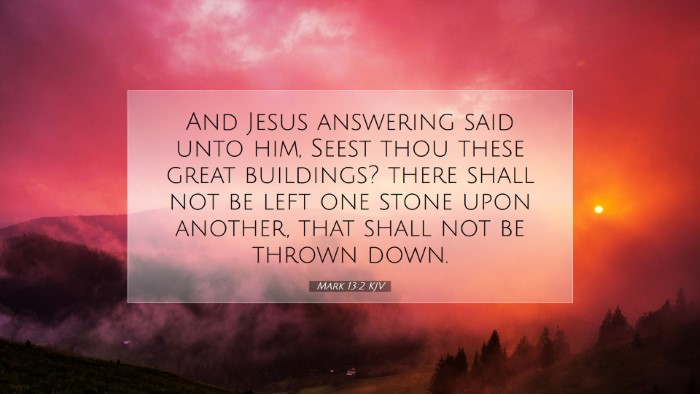Commentary on Mark 13:2
Mark 13:2 offers a profound glimpse into the eschatological discourse of Jesus, where He foretells the destruction of the magnificent temple in Jerusalem. The verse states: “And Jesus said unto him, See thou these great buildings? there shall not be left one stone upon another, that shall not be thrown down.” This pronouncement foreshadows significant theological implications and deserves careful analysis. The following commentary synthesizes insights from public domain commentaries, providing a rich resource for pastors, theologians, and students of Scripture.
Historical Context
Understanding the context of Mark 13:2 is essential. The temple in Jerusalem was not only a religious center but also a symbol of national pride and divine presence among the Jewish people. Constructed by Herod the Great, it was a marvel of architecture, reflecting immense Jewish spirituality and heritage. When Jesus makes this declaration, He disrupts prevailing perceptions of security and permanence tied to the temple.
Matthew Henry's Insights
Matthew Henry notes that the disciples were awed by the grandeur of the temple, drawing attention to its structure and adornments. His commentary emphasizes the folly of placing trust in physical structures over spiritual realities. Henry expounds that Jesus' remark indicates the temporary nature of earthly edifices, warning believers not to invest in transient things but rather in the eternal. His views remind us that true worship should not be confined to places but directed to God Himself.
Albert Barnes on Prophecy and Warning
Albert Barnes elaborates on the prophetic nature of Jesus' statement. He explains that the destruction of the temple foretold the end of the old covenant and anticipated a new covenant in Christ. Barnes asserts that this prophecy served both as a warning to the Jewish nation of impending judgment and as a demonstration of Jesus' divine authority. He underscores the idea that destruction was inevitable, not merely a prediction but a part of God's unfolding plan.
Adam Clarke's Theological Implications
Adam Clarke provides a theological vantage point, asserting that Jesus' declaration had deeper implications than simply foretelling destruction. Clarke suggests it also pointed to the transition from the old ritualistic worship to a new understanding of temple as Christ Himself. This fulfills the prophetic declaration that God no longer dwells in temples made by hands (Acts 7:48). Clarke encourages readers to reflect on the nature of true worship, which transcends physical places, rooting instead in spiritual communion with Christ.
Theological Themes
This verse encapsulates several critical theological themes:
- Impermanence of Earthly Structures: The physical temple was destined for destruction, representing the temporary nature of all earthly institutions.
- Divine Judgment: The prophecy serves as a stark reminder of God’s judgment against idolatry and corrupt practices that had infiltrated the temple's sanctity.
- Transition to Spiritual Worship: As reflected in Clarke's commentary, the end of the temple worship aligns with the new covenant established in Christ, emphasizing a shift towards worship in spirit and truth.
Practical Applications for Believers
As modern readers reflect on Mark 13:2, several practical applications emerge:
- Focus on Spiritual Over Physical: Believers should prioritize spiritual enrichment over the physicality of worship spaces, understanding that God seeks the heart.
- Awareness of God’s Sovereignty: The prophecy encapsulates the control of God over history, encouraging believers to trust in His ultimate plan despite destruction and chaos.
- Preparation for Change: Just as the destruction of the temple changed the landscape of worship, Christians are called to adapt and grow in their faith as God unfolds His purposes.
Conclusion
Mark 13:2 offers a solemn warning intertwined with hope. It challenges believers to reassess their foundations of faith and worship practices. Drawing from the insights of Matthew Henry, Albert Barnes, and Adam Clarke, we see a multifaceted understanding of this verse that extends beyond the historical event to timeless truths about our relationship with God. As readers ponder this text, may they be inspired towards a deeper realization of what it means to worship in spirit and truth, anchored not in earthly structures but in the eternal Word made flesh.


